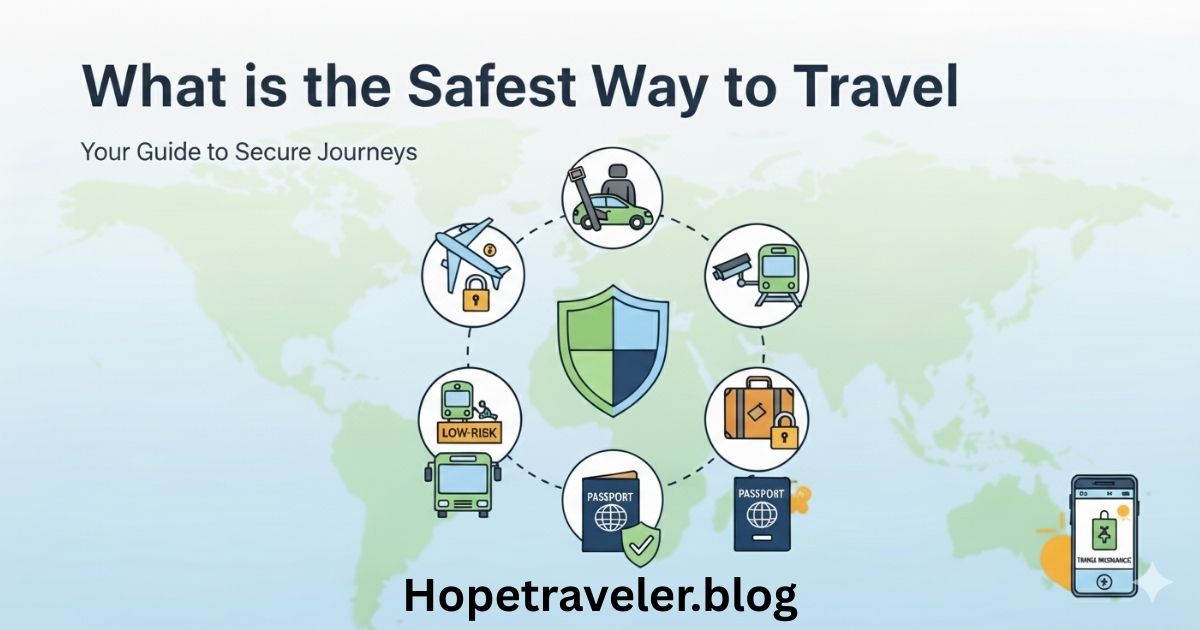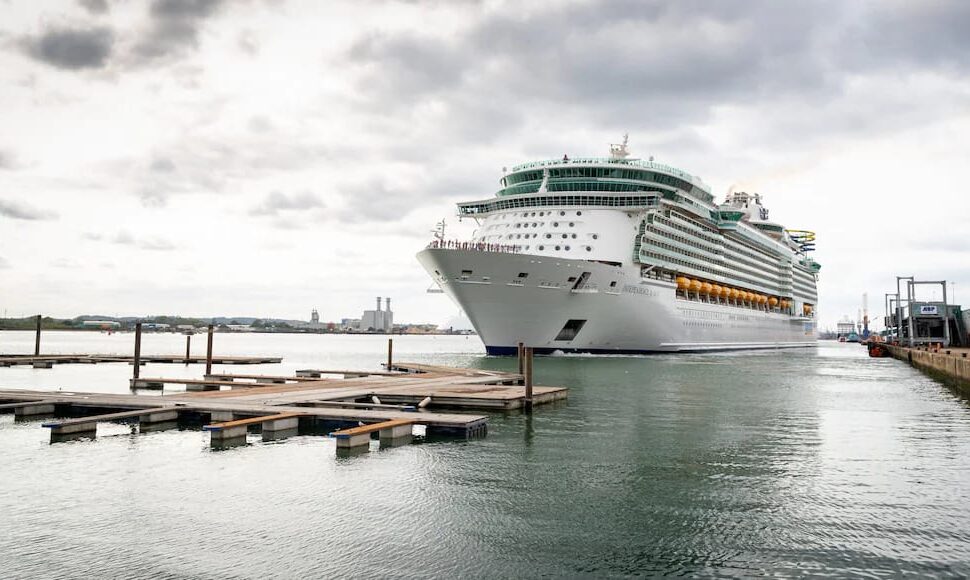Traveling is one of the most common human activities, whether for leisure, business, or family needs. With millions of people moving across cities, countries, and continents every day, the question of safety naturally arises. People want to know: What is the safest way to travel?
According to Wikipedia, travel refers to the movement of people between distant geographical locations. This can be done by foot, bicycle, automobile, train, boat, airplane, or other means. Each method has its own risks and benefits, but statistics and research provide a clearer picture of which ones are considered the safest.
Understanding Travel Safety
When we talk about the safest way to travel, we need to consider multiple factors:
- Accident rates – The number of incidents compared to the number of passengers.
- Environmental conditions – Weather and geography can affect safety.
- Infrastructure – Roads, airports, and railway systems play a big role.
- Human behavior – Driver skill, pilot training, and adherence to safety protocols.
Safety is not just about avoiding accidents, but also about ensuring comfort, reducing stress, and minimizing exposure to crime or health risks.
Air Travel: The Safest Option
Air travel is widely considered the safest form of long-distance transportation. Despite occasional headlines about airplane accidents, the actual risk of dying in a commercial airline crash is extremely low.
- Statistics show that the odds of being involved in a fatal airplane accident are less than 1 in several million flights.
- Airlines operate under strict international safety standards, including pilot training, aircraft maintenance, and advanced navigation systems.
- Air traffic control systems worldwide monitor flights to prevent collisions and ensure safe operations.
Modern airplanes are designed with multiple backup systems, making them highly reliable. For international and long-distance travel, air travel consistently ranks as the safest option.
Rail Travel: A Close Second
Railways are another highly safe mode of transportation, especially in countries with well-developed rail networks such as Japan, France, Germany, and China.
- High-speed trains in countries like Japan’s Shinkansen have recorded decades of operation without a single passenger fatality due to accidents.
- Train systems usually operate on dedicated tracks, reducing the chance of collisions with other vehicles.
- Modern signaling systems and automatic brakes enhance safety.
However, in regions where railway infrastructure is outdated, the risks may be higher. Overall, rail travel remains one of the safest and most comfortable options for both short and medium distances.
Bus and Coach Travel
Traveling by bus or coach is safer than traveling by car, but slightly less safe than trains or planes.
- Professional drivers undergo training and drive for companies that follow safety regulations.
- Coaches and intercity buses often have better safety records than private vehicles because of stricter controls.
- Risks can arise from poor road conditions, over-speeding, or driver fatigue, especially in less-regulated regions.
Still, for budget-friendly and relatively safe travel, buses are a good choice.
Car Travel: The Most Common but Risky
Cars are the most widely used mode of transport worldwide, but they are also among the riskiest.
- Road accidents account for a significant number of deaths globally every year.
- Human error, such as speeding, distracted driving, or driving under the influence, is the biggest factor in car crashes.
- Weather conditions, poor road infrastructure, and vehicle maintenance also affect safety.
While cars offer flexibility and privacy, they require more responsibility from the driver. Seatbelts, airbags, and advanced driver assistance systems (ADAS) have improved safety, but the risks remain higher compared to other modes.
Water Travel: Ships and Ferries
Traveling by sea is relatively safe, especially on large ships and modern ferries.
- Cruise ships are equipped with advanced safety equipment, medical facilities, and evacuation plans.
- International regulations ensure that ships undergo regular safety inspections.
- However, risks include bad weather, accidents during docking, or rare but catastrophic events like ship capsizing.
Smaller boats and ferries, particularly in developing regions, may lack proper safety measures, which increases risks.
Walking and Cycling
Walking and cycling are eco-friendly ways to travel, but safety depends heavily on the environment.
- In cities with pedestrian-friendly infrastructure, walking is quite safe.
- Cycling in cities with dedicated bike lanes (like Amsterdam or Copenhagen) is also considered safe.
- Risks increase in areas with heavy traffic, lack of sidewalks, or poor lighting.
Although accidents can happen, walking and cycling remain healthy and sustainable travel options when proper infrastructure exists.
Comparing the Safety of Travel Modes
Here’s a general ranking of safety from most to least safe, based on global accident data:
- Airplanes – Safest for long-distance travel.
- Trains – Highly safe, especially in modern networks.
- Buses/Coaches – Safer than cars, especially for long routes.
- Ships – Safe overall, but affected by weather and infrastructure.
- Cars – Flexible but high risk due to accidents.
- Walking and Cycling – Safe in proper conditions, risky without infrastructure.
Safety Tips for Any Mode of Travel
No matter which way you travel, following safety measures can reduce risks:
- Plan ahead – Check schedules, weather forecasts, and safety ratings.
- Follow rules – Whether it’s traffic laws, airline instructions, or ship regulations.
- Stay alert – Avoid distractions, especially when driving or walking near roads.
- Choose reputable providers – Airlines, train services, or bus companies with good safety records.
- Use safety equipment – Seatbelts in cars, helmets for cycling, life jackets on boats.
Psychological Safety in Travel
Safety isn’t only about statistics. Feeling safe matters, too. For some travelers, airplanes may seem scary due to fear of flying, even though they are statistically the safest. Others may feel more comfortable driving their own car despite higher risks.
Understanding both the data and your comfort level is key. Balancing practical safety with peace of mind ensures a better travel experience.
Conclusion
So, what is the safest way to travel?
Statistically, air travel is the safest method, followed closely by train travel. Buses and ships are generally safe, while cars carry more risk due to road accidents. Walking and cycling can be safe when supported by good infrastructure.
The safest choice depends on distance, location, and personal circumstances. Regardless of the mode, practicing caution, choosing reliable operators, and following safety rules make travel significantly safer.
Travel opens doors to new experiences, and when done safely, it becomes a journey to remember rather than one to regret.




